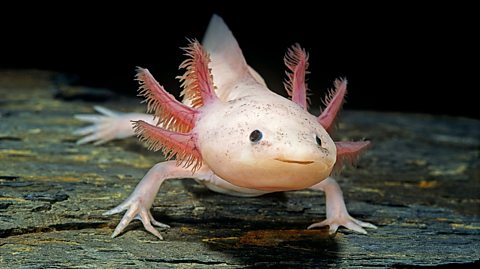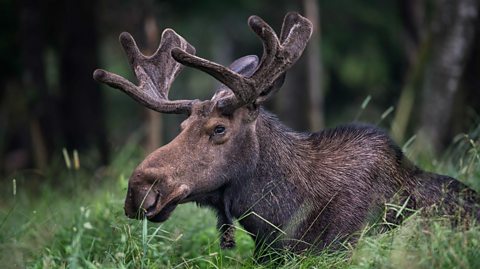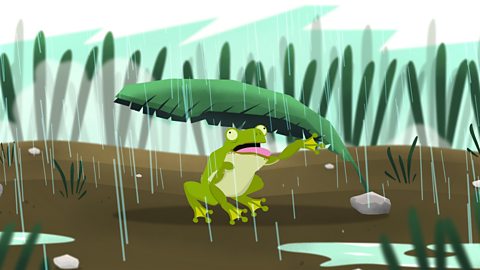Time is ticking for Jodie Whittaker's incarnation of the TV Time Lord.
It means there’s another regeneration coming in Doctor Who.
The fictional traveller’s ability to completely change their worn out or injured body, emerging as someone who looks completely different, has been one way to ensure the popular programme has been running for almost 60 years. Once an actor moves on from playing the Doctor, another can easily take their place in a much-anticipated regeneration scene.

But regeneration isn’t fictional. Nature has examples of animals and organs that are capable of regrowing themselves. They may not look as different by the end of the process as, say, Matt Smith does from David Tennant - but it’s still classed as regeneration.
Salamanders’ ‘magic’ limbs
This family of amphibians is capable of regrowing legs and tails which could be lost when, for example, they are attacked.
The ability to regenerate limbs in this way has fascinated scientists for centuries, in particular the 18th Century Italian physiologist Lazzaro Spallanzani. He had a theory that the base of each salamander’s limb contained smaller ‘spare part’ limbs which could regrow if and when required. Over time, his theory developed that the limb which grew back was linked to the one which had been there previously. More modern research shows that Spallanzani’s research was on the right path.

When a salamander loses a limb, the exposed blood vessels and tissue contract, to prevent any bleeding. Then, skin from the edges of the wound grows across the damaged section to protect the amphibian from infection.
Below the skin, cells which had once been dormant begin to divide and multiply to create new ones. Older cells change to something called a blastema, from which the new limb will grow. Somehow, the cells know the positions they need to be in and will only replace what has been lost. From that blastema, a salamander can grow a new leg or tail, which will eventually grow to full size.
Why it happens is still a puzzle, although experts have their theories. In David Attenborough‚Äôs 91»»±¨ series Natural Curiosities, it was mentioned that salamander, like all amphibians, have a tadpole phase where they grow the limbs that enable them to walk on land. Their regeneration skills could lie in the ability to re-trigger this phase of their development, even when they are adults. It would be much the same as a person being able to repeat the way their limbs grew in the womb if they ever lost and arm or leg.
A liver's special power
Humans certainly aren’t salamanders. While we would struggle to grow a replacement foot or hand, we’re not completely lacking in regenerative ability.
Our liver is an interesting case. This vital organ produces bile which helps us digest any fats in our food. It also helps clear toxins from our body. Hepatocytes are cells found in livers and it is their ability to split in two which helps the organ repair itself. If as much as 51% of a liver is missing, it is still able to repair itself, although hepatocytes do eventually lose their ability to divide.
Sometimes, a liver can be so badly damaged that the best course of action is for a patient to undergo a liver transplant. In 2015, a team from the University of Edinburgh looked into using stem cell therapy to help regenerate damaged livers and reported success when testing the procedure out.
Check out my new antlers
When you’re a male moose (also called a bull), a big part of your life involves impressing any female moose in the vicinity. Moose aren’t renowned for handing out posh boxes of chocs or bunches of flowers, so when it comes to being a bit of a catch, their antlers have to do all the hard work.

The bigger and more impressive a pair of antlers are, the better chance a bull has of catching the eye of a passing female. But what is perhaps even more impressive about these antlers is that each male grows a new set every year. Their antlers regenerate themselves.
In winter, a male loses the antlers it has been growing for the past year. Minerals from within are reabsorbed back into the base of the antler, causing it to weaken and fall off. New cells grow over the exposed flesh. These are connected to the cells below and kickstart the regrowth.
Antlers grow incredibly quickly - up to 2cm a day in older males. But the longer the antlers grow, the trickier it is for the blood vessels and nutrients necessary for growth to reach the outermost tips. To remedy this, moose grow furry velvet across their entire antlers which carry the nutrients to wherever they are needed. Sometimes, the cycle doesn’t work and the antlers either don’t grow back, or take on unusual shapes.
Once fully grown, the moose shakes off the velvet to reveal the antlers in all their glory. Hopefully, it will be enough to impress the surrounding females. If not, there’s always next year’s model to look forward to.
This article was first published in January 2021 and updated in October 2022.
The Doctor Who guide to Earth history
Just don't mention the Time Lord's involvement in your homework.

What are amphibians?
Learn all about amphibians with this Bitesize - KS1 Science article.

Write your own Doctor Who theme
KS3 Music
